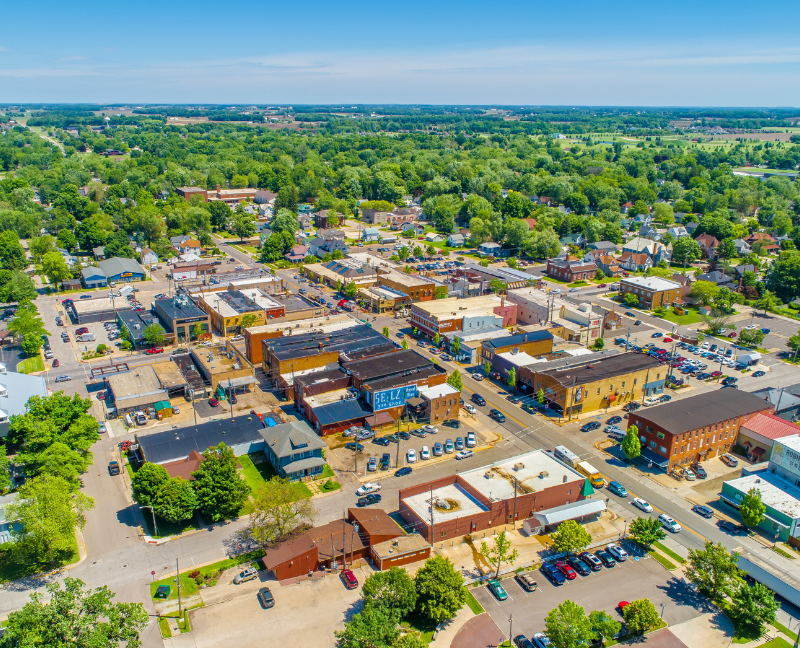History, mystery, and timeless charm are all interwoven within Indiana culture. This state encourages you to live in America's vibrant past, where the sounds of Abraham Lincoln's childhood explorations still echo through the fields and woodlands.
In these smaller, less well-known cities, you can enjoy a cup of coffee in the morning at a café that has been around for generations, stroll down brick-lined streets that pioneers once walked, or experience the silent excitement of an evening march under the stars, which brings back memories of a bygone era. Make sure to put these eight hidden jewels on your bucket list because the lakeside hideaways that border the hamlets surrounded by forests are not to be missed.
Unspoiled Towns In Indiana
Nashville
Due to its location in the scenic Brown County of South Central Indiana, this Nashville has established a reputation as a tranquil haven, in contrast to its namesake in Tennessee. Originally called Jacksonburg, the town was established in 1836 and evolved into the Brown County Art Colony, a haven for artists because of its breathtaking views, rustic elegance, and simplicity that still inhabits the town today.
The best season to visit Nashville is fall because the landscape's visual feast peaks during this season. Nature and regional celebrations like Halloween work together to saturate the town and its surroundings with vivid hues during this time of year, providing tourists with an amazing exhibition of natural and man-made creativity. The town is home to the Brown County Art Gallery, which has a sizable collection of local artwork that reflects the history and culture of the area.
The town's artistic appeal is enhanced by the Steele State Historic Site, which offers a close-up view of the life and work of a well-known Hoosier Group artist. With its log homes and artisan demonstrations, Pioneer Village provides a living history experience for people who yearn for a closer bond with the past. Nashville appeals to nature enthusiasts and art lovers since the Brown County State Park is conveniently located near the town center and offers a wealth of hiking, camping, and horseback riding options.
 (Brown County Art Colony - browncounty.com)
(Brown County Art Colony - browncounty.com)
Madison
In Madison's vast Historic District, which is located along the picturesque banks of the Ohio River, more than 130 structures that bear witness to the city's rich architectural history are painstakingly conserved and listed on the National Register of Historic Places. The Lanier Mansion State Historic Site is a feature of Main Street, which takes tourists back in time.
One of the best examples of Greek Revival architecture in the Midwest, this estate was built in 1844 and provides guided tours that explore the region's rich history. The Madison Regatta, a world-class hydroplane speedboat race that turns the riverbank into a center of activity every July, adds even more life to the town's historical tale.
The town's well-preserved antebellum buildings and landmarks, such as the Shrewsbury-Windle House and the J.F.D. Lanier State Historic Landmark, which provides a window into 19th-century American frontier life, demonstrates its ongoing ties to its early history.
Clifty Falls State Park provides peaceful trails and stunning waterfalls ideal for unhurried exploration for individuals who enjoy the outdoors. Events such as the RiverRoots Music & Folk Arts Festival and the Madison Chautauqua Festival of Art not only spotlight local artists but also introduce guests to the vibrant local culture. These are packed into Madison's calendar for those who enjoy the arts.
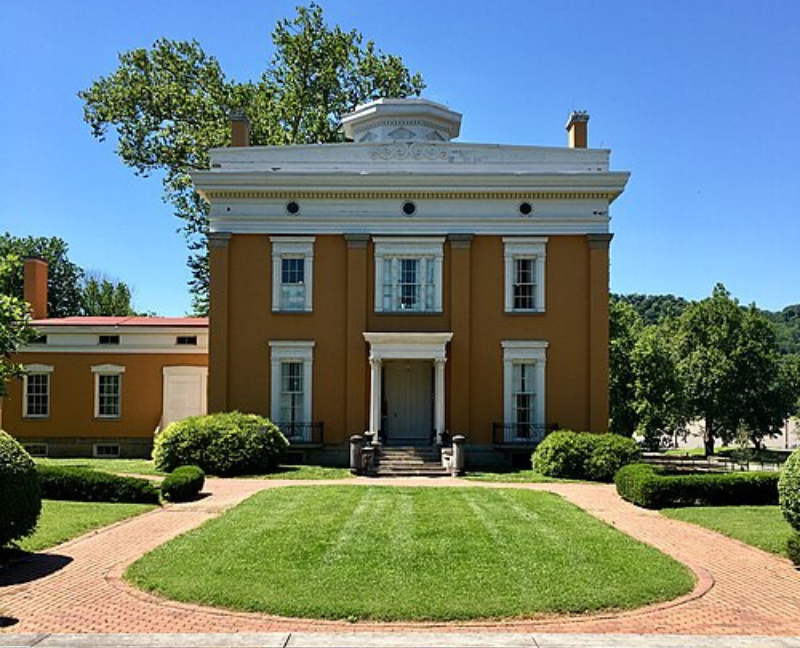
(Lanier Mansion State Historic Site - wikipedia.com)
Shipshewana
Shipshewana is a treasure trove of natural beauty and cultural legacy in addition to being a place to escape to a simpler way of life. The town's focal point is the Menno-Hof Amish/Mennonite Information Center, an essential educational resource that provides engaging tours and interactive displays that delve into the rich histories, values, and lifestyles in Amish and Mennonite communities.
Through these encounters, tourists might have a profound understanding of the community's commitment to tradition and simplicity, which are qualities that are becoming more and more uncommon in the modern world.
From May through September, the town also has the biggest flea market in the Midwest, offering a wide variety of products from regional craftspeople. From specialized delicacies to handcrafted objects that are not unique but also represent Amish craftsmanship.
Take a trip along the Pumpkinvine Nature Trail to discover Indiana's vast natural surroundings. This picturesque trail, which winds through verdant fields and forests that change with the seasons and provide vivid displays of color and animals, provides a close-up look at Indiana's pastoral beauty.
The town's attraction as a peaceful retreat is heightened by the surrounding Shipshewana Lake Park, which provides opportunities for fishing and quiet introspection by the water.
Shipshewana's natural beauty and slow-paced lifestyle make it an unspoiled destination, whether you choose to bike along the paved paths, explore the local market, or take a leisurely carriage ride.
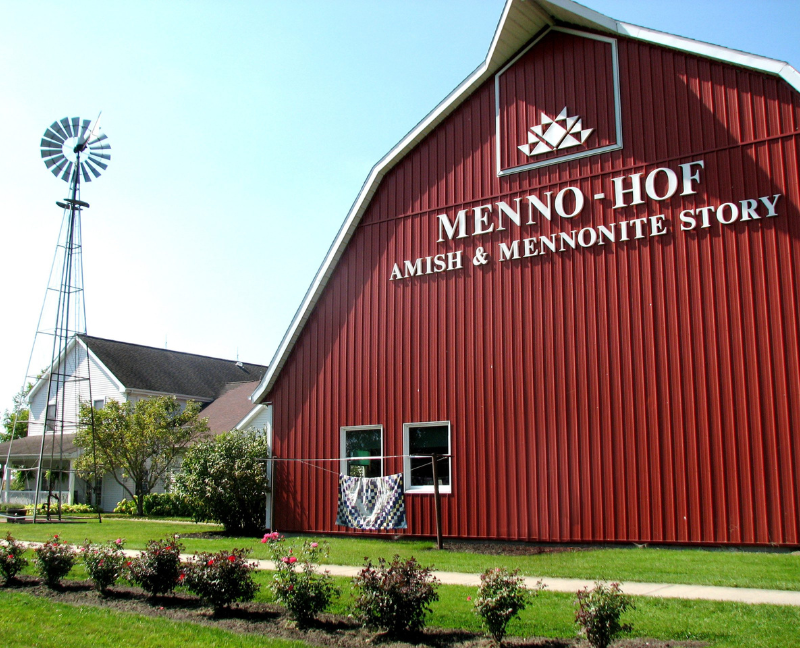
(Menno-Hof Amish_Mennonite Information Center - visitshipshewana.org)
New Harmony
New Harmony, one of America's daring social experiments, is a testament to the dream of living in a perfect, utopian setting.
With its exquisitely preserved buildings and common areas, New Harmony, which was first founded by the Harmonie Society in 1814 and later modified by Robert Owen into a model of equality and communal life, provides a window into a singular historical narrative.
The town's design not only pays homage to its history but also exudes a contemporary charm that encourages tourists to stroll around with its cobblestone streets and brick walkways.
Notably, the Roofless Church, created by architect Philip Johnson, offers a barrier-free space for worship exposed to the sky above and perfectly embodies the town's spirit of transparency and introspection.
New Harmony has a unique combination of natural beauty and historical richness because of this as well as the tranquil Wabash River, which provides peaceful picnic areas and strolls along its banks.
It is home to barely 700 people celebrating and retaining its German history through lively local celebrations like the yearly Oktoberfest and Kunstfest, which turn the town into a bustling center of cultural interchange every fall.
Both tourists and academics interested in learning about this small community's history and culture are drawn to these events because they provide a sample of local customs and crafts. The town's reputation as a tranquil getaway is further enhanced by the positive reviews given to the New Harmony Inn and other nearby lodging establishments for their friendliness.
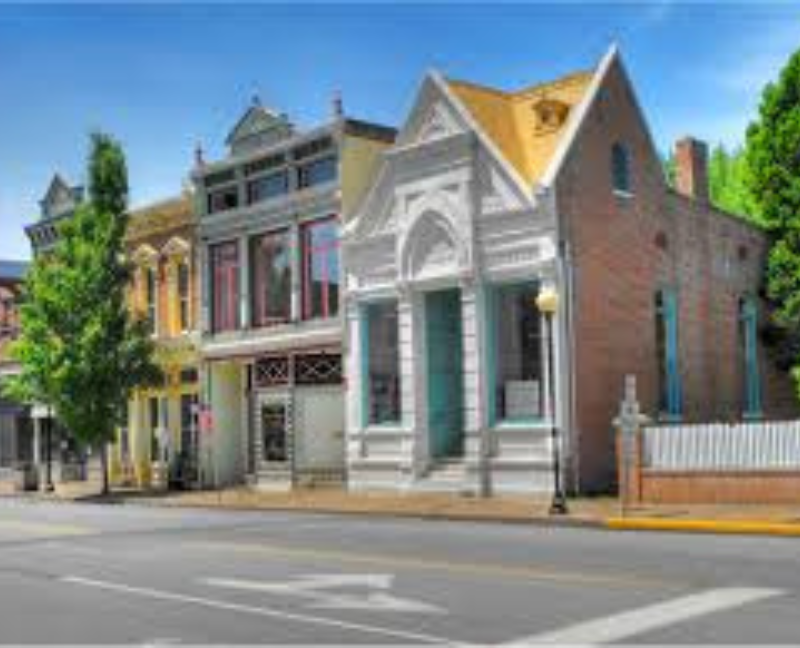
(New Harmony - wikipedia.com)
Roanoke
Established within the bustling Wabash and Erie Canal, Roanoke was a crucial port for barge captains traversing the vast waterway between the Ohio River and the Great Lakes.
Due to the well-preserved architecture from its early years, Roanoke has kept its historical appeal. The town's village-like atmosphere and architectural legacy entice tourists to explore its streets, where history comes to life and becomes visible.
A distinct sense of place that is becoming more and more uncommon in contemporary metropolitan areas is fostered by the town's commitment to preserving its original buildings and layout.
The lively community and the pride with which they uphold their historical traditions demonstrate how the area has grown from a minor lock halt to a flourishing small town. Roanoke is a calm haven for people who value the elegance of the past combined with the peace of small-town life. Not only is it physically preserved, but it also embodies the ethos of a town that cherishes its history and the slower pace of life that enables locals and tourists to genuinely interact with one another and history.

(Roanoke - discoverroanoke.org)
Zionsville
The center of Zionsville's charm is Main Street, which features charming brick pavement bordered by distinctive stores, art galleries, and welcoming cafés that encourage slow exploration.
Visitors are immersed in a scene that combines authentic historical details with lively local life as they meander along this welcoming boulevard. The town's appeal as the ideal setting for weekend retreats or tranquil day outings is increased by the well-preserved medieval structures and profusion of urban trees.
A delightful walking experience is also provided by the Traders Point Eagle Creek Rural Historic District, which highlights the town's dedication to conserving its architectural legacy while offering a verdant, natural environment that promotes outdoor recreation.
The annual Zionsville Fall Festival and the Christmas in the Village parade are highlights of the town’s social calendar, delivering a taste of local customs and festive cheer. These activities, coupled with the weekly Zionsville Farmers Market, give opportunities for visitors to indulge in local vegetables and artisan products, supporting the small-town economy and building a feeling of community involvement.
With one of the biggest collections of antique fans in the world, the oddball AFCA Antique Fan Museum offers an interesting distraction for anyone with specialized interests.
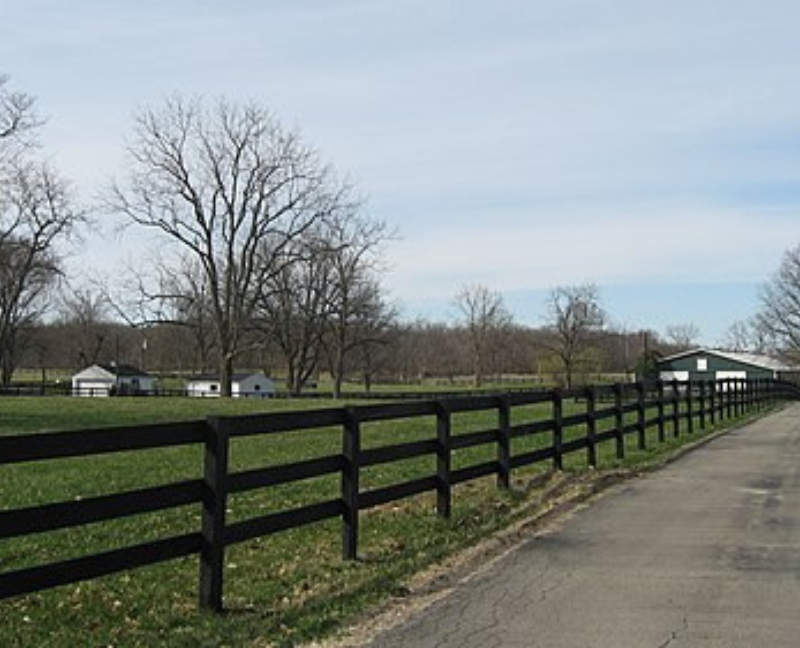
Auburn
The Auburn Cord Duesenberg Automobile Museum, the city's main attraction, is more than just a collection of old vehicles; it is a celebration of Auburn's crucial role in the American auto industry.
Auburn, known as the "Home of the Classics," offers an untouched piece of Americana. The museum, which features the opulent Cord and sophisticated Duesenberg models, is housed in the Auburn Automobile Company's original Art Deco headquarters and is a veritable gold mine of the automotive inventions that defined an age. These well-known companies perfectly capture the glitz and inventiveness of early American automobiles. Visitors may get a deep look into a bygone age of luxury and flair thanks to Auburn's commitment to conserving this heyday of automobile design and the museum's stunning architecture.
Additionally, Auburn's yearly Auburn Cord Duesenberg Festival serves as a showcase for the city's thriving community. Every summer, this well-known occasion turns the city into a bustling center of parades, vehicle exhibits, and auctions honoring its rich automotive heritage. Visitors are treated to a picturesque setting created by the festival and the town's many other historical attractions, including the Neoclassical DeKalb County Courthouse.
With its charming shops and historic landmarks, such as the Auburn Community Mausoleum and the Eckhart Public Library and Park, the city's walkable downtown further encourages exploring. Auburn is the perfect place for people looking for both historical depth and relaxed appeal in an untouched environment because of its exceptional ability to combine its vibrant automobile culture with easily accessible, pedestrian-friendly metropolitan areas.
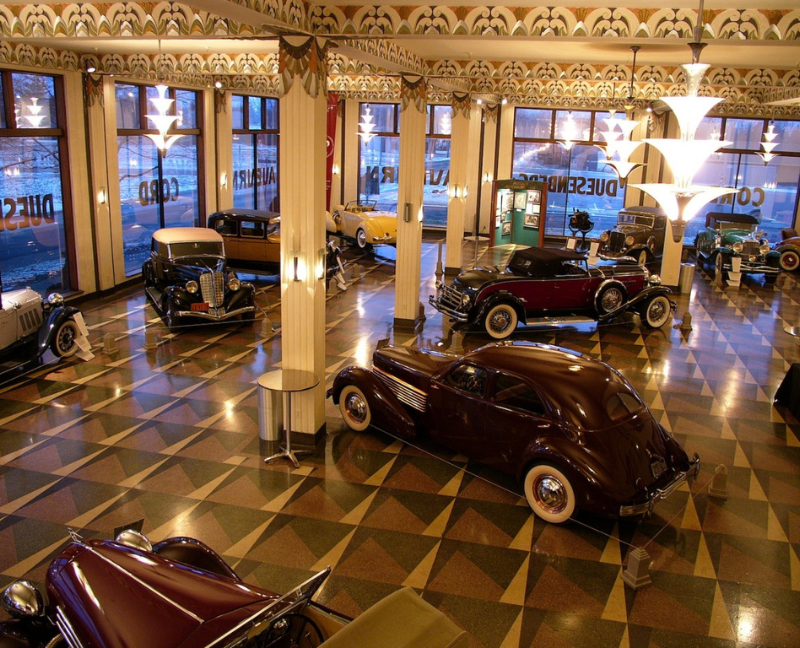
(Auburn Cord Duesenberg Automobile Museum - automobilemuseum.org)
Corydon
The first state capital, Corydon, is now a treasure. The historic significance of Corydon, which is only 25 miles west of Louisville, Kentucky, is evident in its well-preserved downtown area, which is on the National Register of Historic Places.
Visitors can explore several noteworthy locations here, including the Constitution Elm Memorial, the Kintner-McGrain House, and the Old Capitol, which was the state's government center from 1816 to 1825.
From Corydon's early 19th-century beginnings to its involvement in the Civil War, each landmark contributes to the city's rich history. The town is also bustling with cultural events that reflect its history, such as reenactments of the Battle of Corydon, the only Civil War battle known to have taken place in Indiana, and customs like the Halloween Parade and Friday night band concerts that bring tourists into the town's sense of community and historical pride.
Adventurers can enjoy hiking, horseback riding, ziplining, and mountain biking at the Harrison-Crawford State Forest and O'Bannon Woods State Park, two state parks and natural reserves that are accessible from the town.
The longest cave system in Indiana, Indiana Caverns, as well as other well-known caverns including Wyandotte Cave and Squire Boone Caverns, are located in Corydon, providing spelunking enthusiasts with some of the best spelunking experiences in the Midwest. The town's historical charm and these natural features combine to make for an engaging combination of education and adventure.
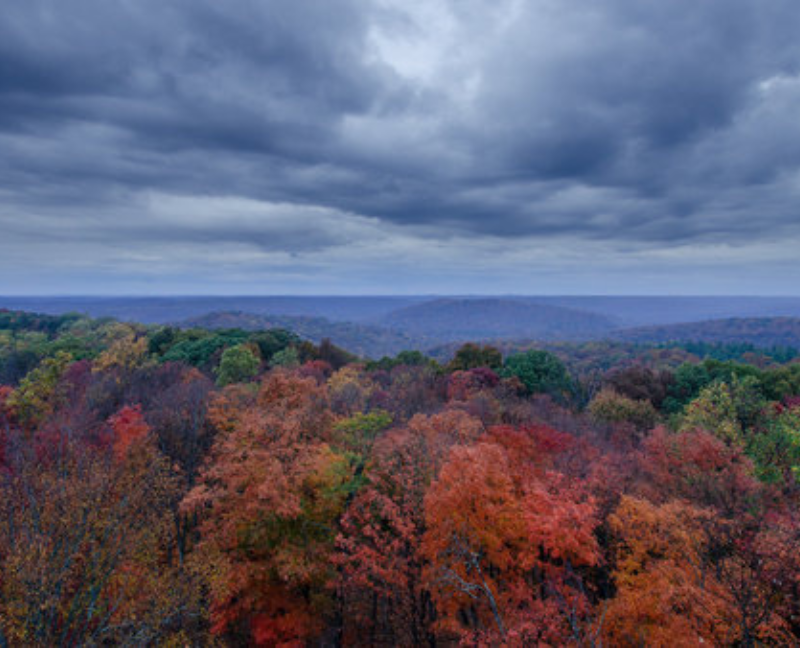
(Harrison-Crawford State Forest - discoversouthernindiana.com)
Which of these small towns have you been to or are planning to visit? We'd love to hear your thoughts in the comments!

